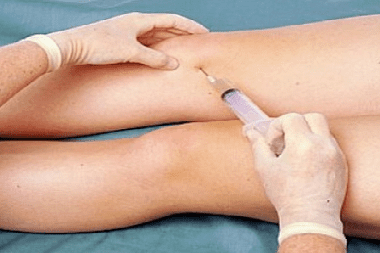Traumatology >>>> Joint hemarthrosis
Joint hemarthrosis.

Hemarthrosis is a hemorrhage in the joint cavity that causes pain, an increase in joint volume and restriction of movement in the joint.
The cause of hemarthrosis is trauma (bruises, dislocations, ruptures of ligaments, ruptures of the joint capsule, ruptures of the meniscus, fractures, etc.) or diseases accompanied by spontaneous ruptures of the walls of blood vessels and outflow of blood into the articular cavity (with hemorrhage, hemophilia, scurvy, etc.) .
Most often, hemarthrosis develops in the knee joint, in the ankle joint or in the elbow joint.
Signs of hemarthrosis:
- swelling in the joint area (gives a ball-like appearance to the joint),
- fluctuation at the site of joint edema (swelling),
- enlarged joint in size (in volume),
- pain when moving in the joint,
- pain when supporting a joint,
- limited joint mobility,
- with a significant amount of poured blood or ongoing bleeding, the skin in the joint area turns blue.
Treatment for hemarthrosis requires timely access to a trauma center or a traumatology department. First aid for hemarthrosis consists of applying cold (heating pad or ice pack, heating pad or plastic bottle with cold water, cloth soaked in cold water) on the damaged joint in order to reduce the rate of bleeding. If the hemorrhage is minor, then treatment includes resting the limb, giving it a horizontal position, or laying on a hill.
With significant hemorrhage (more than 30 ml), puncture is performed under local anesthesia.
Joint hemarthrosis of a non-traumatic nature requires parallel treatment of the disease that provoked hemorrhage into the joint cavity.

Read

Read



























